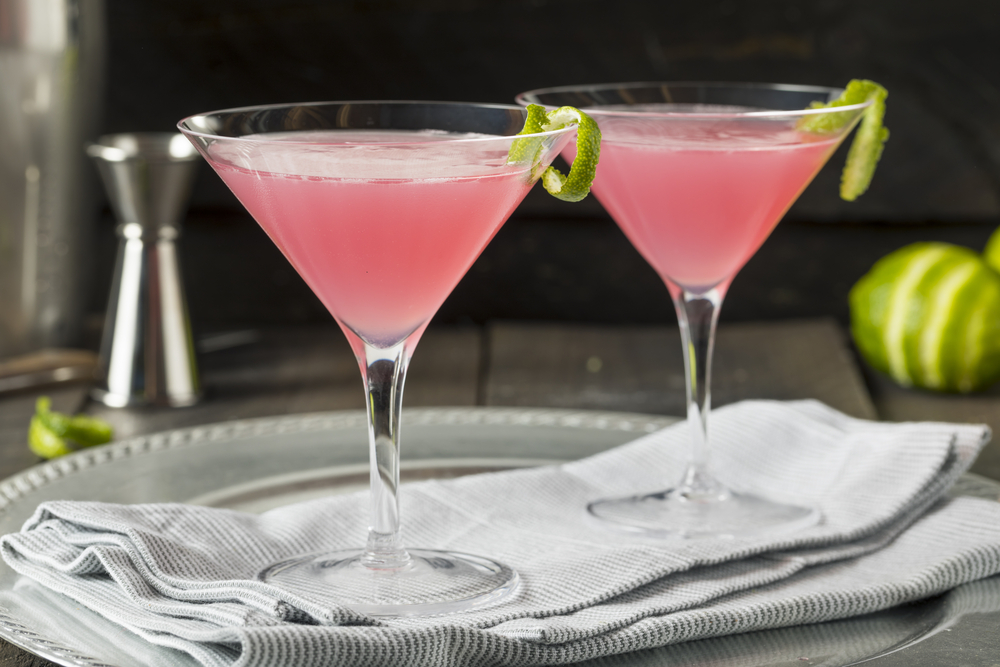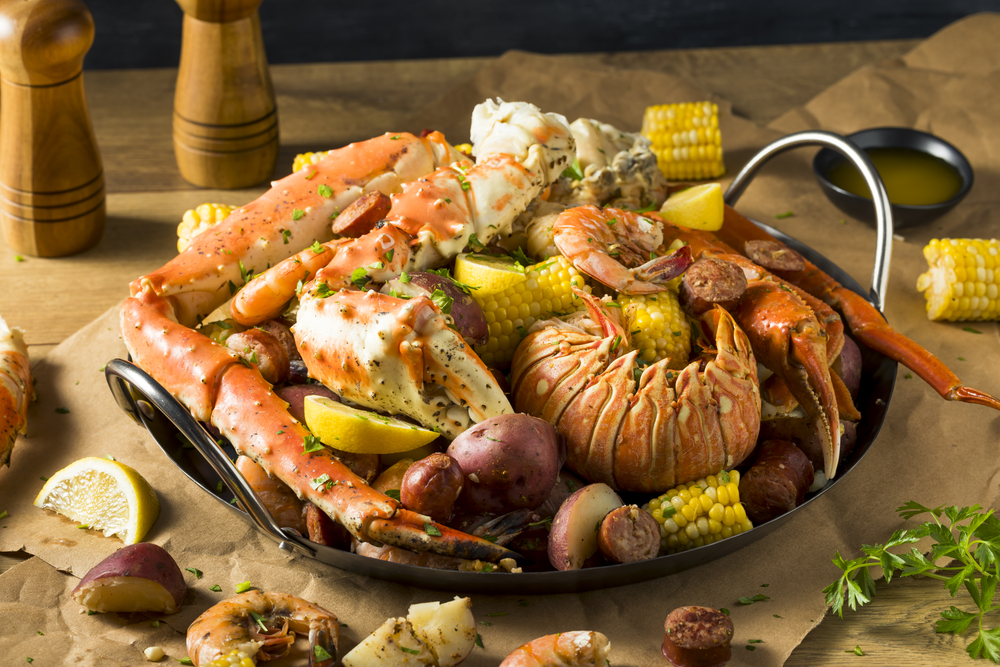Salmon is higher-end seafood that can be enjoyed raw or cooked but never slightly undercooked. With its opaque white, somewhat pink colored outside and translucent pinkish white in the center, a satisfactorily cooked salmon can be one of the tastiest dishes! Salmon can be a tricky dish to cook, though there are many tips you can use for your next salmon!
Have you ever had overcooked salmon? Yuck! Overcooked salmon can be a vile-tasting dish that could forever turn you off from the tasty fish. That said, you should try properly cooked salmon if you think you do not like salmon, as you may merely not like overcooked salmon!

How Long Does Salmon Take to Cook?
Salmon can vary in cooking times depending on the cooking method and the fillet size. You will want to determine the best cooking method for the size of your salmon fillet. The thicker the fillet, the longer it will take to cook.
Cooking times can include:
- Pan-seared salmon fillets will take roughly 4 to 8 minutes on medium to high, 2 to 5 minutes on each side of the fillet.
- A thin salmon fillet broiled can take 4 to 5 minutes. A thicker, 1-inch thick fillet may take 7 to 10 minutes.
- Grilling your salmon can be done in about 7 to 8 minutes on medium to high heat, around 375°F to 450°F or 190°C to 232°C.
- Baking salmon takes roughly 13 to 16 minutes at 375°F or 190°C.
As you can see above, pan searing is your quickest method, with baking being the most time-consuming method. Though baking may take a bit longer, you can guarantee to keep more of your salmon’s moisture.
How Do I Know If Salmon is Properly Cooked?
There are numerous ways to check if your salmon has been correctly cooked, like checking the color and texture or the temperature.
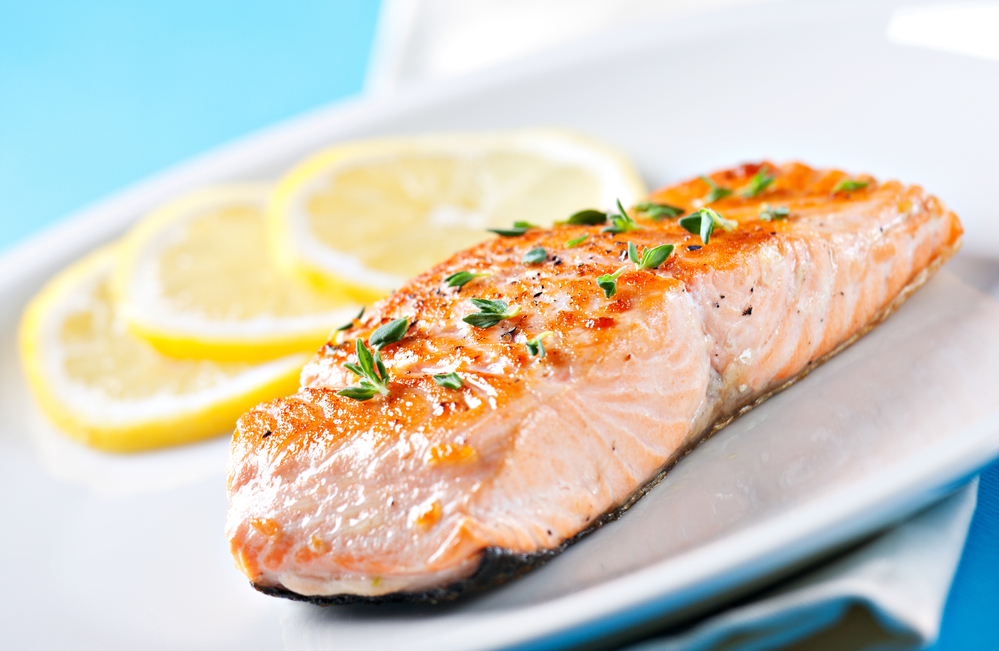
Checking the Color and Texture
Your first way of checking if your salmon has properly cooked should be to inspect the color and texture of your salmon. An adequately cooked salmon will be an opaque pinkish white-hued color on the outside of your salmon and sheer pink in the center of your salmon. If your salmon is still dark pink in the center, it is undercooked, and you should cook it a bit longer.
The texture of your salmon should be flakey. Take a fork and see if when you place your fork or knife in the salmon, it flakes away or resists your fork. A resisting texture can indicate an undercooked salmon.
Checking the Temperature
Another way to check if your salmon has cooked thoroughly, and probably the most surefire way, would be to take the internal temperature. It would help if you verified that the temperature is at least 110°F or 43°C; anything under that means the salmon is practically raw.
At 110°F or 43°C, to 125°F or 52°C, your salmon should be medium rare. Anything between 125°F or 43°C to 140°F or 60°C would be medium to well done. Any temperature above 150°F or 65°C is likely overcooked. The FDA suggests you cook your salmon to 145°F or 63°C to ensure safety.
Remember, when taking the internal temperature of your salmon, you should push the thermometer into the broadest part of your salmon, as that will take the longest to cook. Checking the internal temperature of your salmon can be the best way to check if your salmon has thoroughly cooked or not.
Use a Butter Knife
Another form of checking your salmon would be utilizing a butter knife. Using a butter knife is so easy to use to inspect your salmon. You could also use a fork, but a fork could ruin your final product more than a butter knife will.
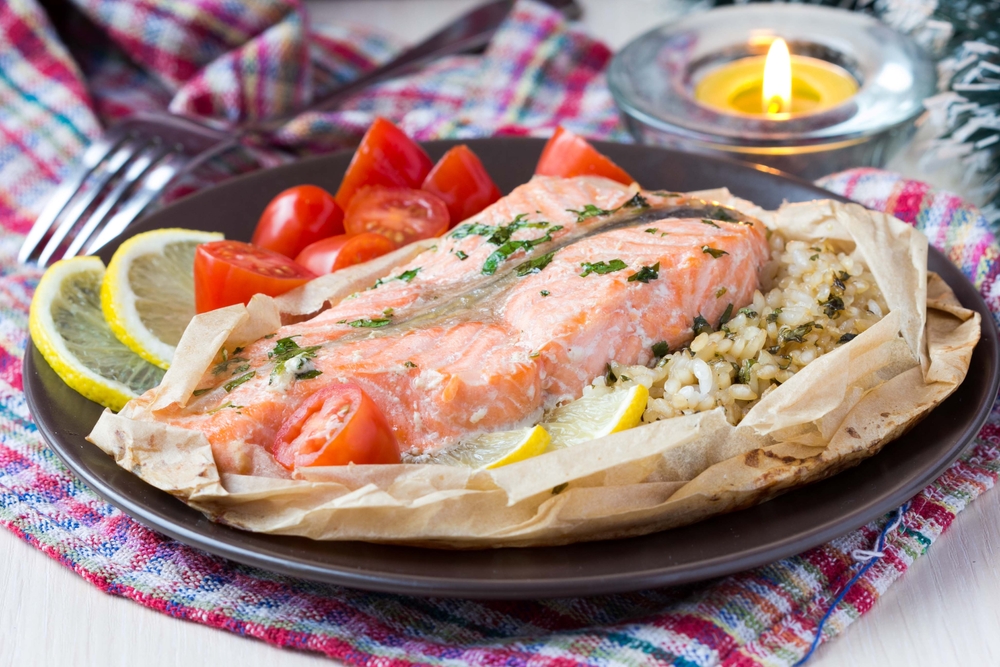
Follow the subsequent steps to check your salmon using a butter knife:
- Gently press the tip of your butter knife into the thickest part of your salmon.
- If your knife does not easily slide in, your salmon has yet to finish cooking.
- Look at the interior of your salmon to see if it has finished cooking. It should be a translucent pink inside with an opaque pinkish white on the outside.
- Another test with the butter knife you can try is to insert your butter knife into the thickest part of your salmon for 5 seconds.
- Immediately upon removing your butter knife from your salmon, press the utensil on your bottom lower lip. If the knife is warm, your salmon has finished cooking. If the silverware is chilly, your salmon needs more additional time.
Using a butter knife to check your salmon is excellent in addition to other methods of checking your salmon’s doneness. However, this is only partially a surefire way of testing if your salmon has completed cooking or not.
What Does Overcooked Salmon Look Like?
Overcooked salmon can be relatively easy to notice. Correctly cooked salmon should be an opaque, pinkish color on the outside and a translucent pink in the center of your salmon. If your salmon is either an opaque white or orange all the way through your salmon, more than likely, your salmon is overcooked.
Your properly cooked salmon should be tender, moist, and flakey when you consume it. Avoiding high heat can prevent your salmon from becoming overcooked. Overcooked salmon will have a firm, dry and chalky texture to it.
What Does Undercooked Salmon Look Like?
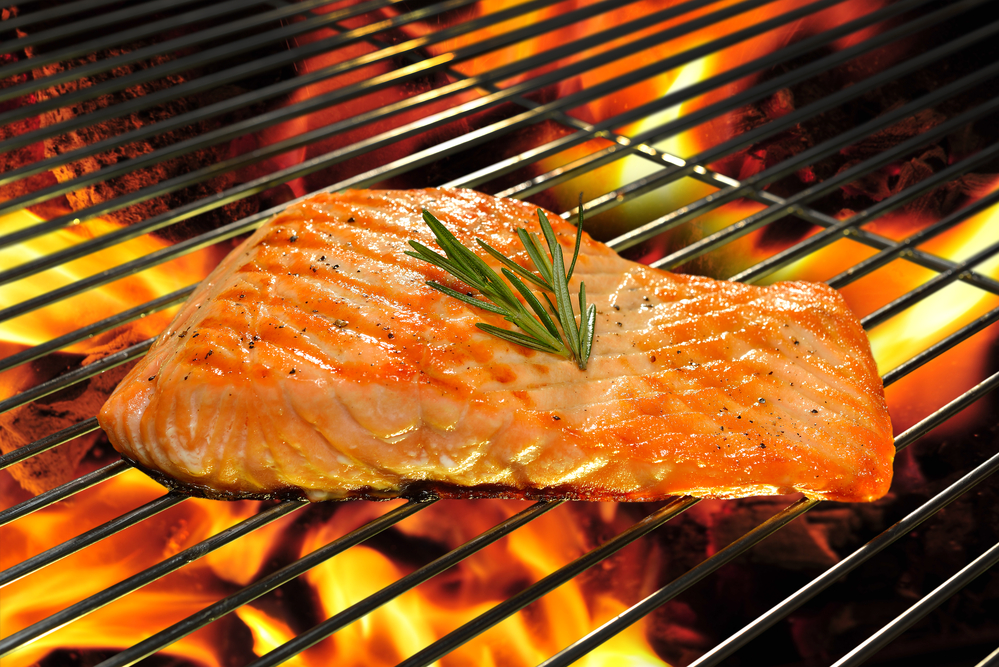
You can easily spot an undercooked salmon from its raw, pink color! Your salmon is undercooked if you see a dark pink in the center of your salmon. Contrary to overcooked salmon, undercooked salmon has a deeper pink color. It may also be undercooked if your salmon has an off texture, such as slimy.
Undercooked salmon can lead to many issues in the near future, such as food poisoning, another food-borne illness, a tapeworm or parasite, or even gastrointestinal disease.
What Things Should You Avoid When Cooking Salmon?
Have you mastered the art of cooking salmon yet? No? Well, look no further! You can follow the following tips to nail your next salmon fillet!
Removing the Salmon’s Skin
One thing you must remember to do to cook your salmon perfectly is to keep the skin intact. A common misconception you may be aware of is removing the skin. A lot of people remove the skin of their salmon for various reasons. In any case, you should not remove the skin of your salmon.
Removing the skin of your salmon fillet can cause your salmon to cook too quickly, resulting in a dry and chalky textured salmon. That can be a bit distasteful.
Another thing you may need to do differently is to cook your salmon with the skin side up. Cooking your salmon with the skin side up can cause the same results as removing the skin altogether.
Seasoning the Salmon Too Soon
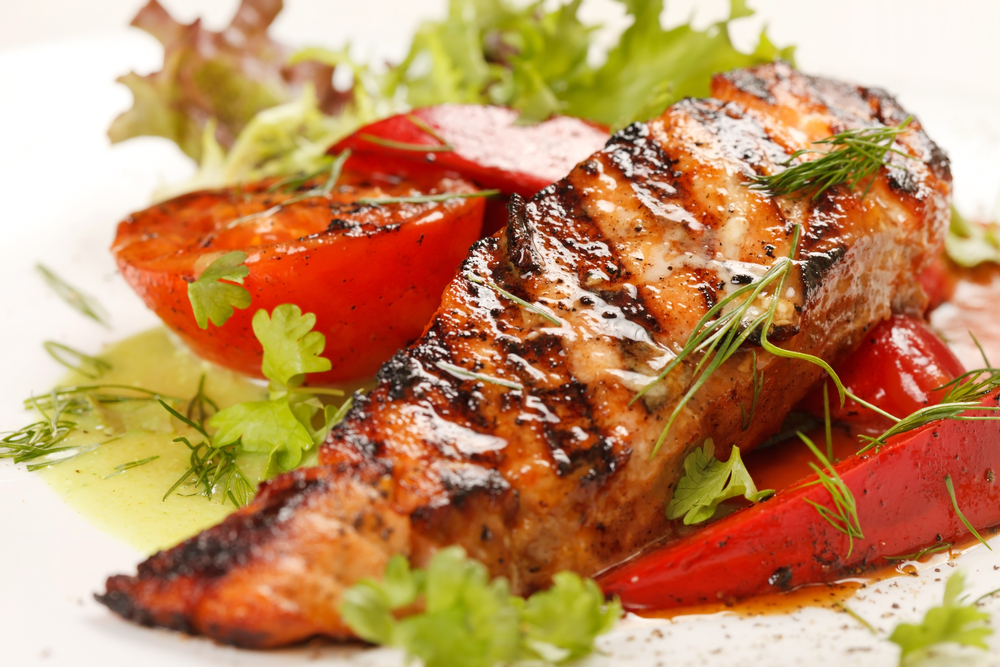
One thing you must not do is season your salmon too early. Salmon are prone to drying out from the spices absorbing all of your salmon’s moisture. Since the salt and spices will leach out the water of your salmon, you will end up with an unpalatable, dry, and rubbery fillet of salmon.
You should ensure that you salt or season your salmon fillets no more than 15 minutes before cooking. Any longer, your salmon can absorb the salt and making salmon soft and having a weird texture.
Your best way of seasoning salmon fillets would be to ensure your pan is completely hot and up to temperature. Then add salt immediately before placing your salmon in your pan.
The Salmon Fillet is Too Thick
A common issue people have with cooking salmon fillets is that their fillets are too thick. Thick fillets will cook unevenly, giving you an uneven cook and texture of your salmon. When you purchase your salmon fillets from the store, you should ensure that your fillets are of a uniform thickness and that the thickest part is no wider than an inch.
Ensuring that your salmon fillets are not too thick is likely the first thing you should pay attention to when cooking salmon. Fillets less than an inch wide are your best option, as they cook evenly and adequately with little risk of undercooked salmon. However, they are more prone to overcooking as they take less time than you’d think.
Practice Makes Perfect
Just like any other skill, you need to practice to get better! Cooking is an art and skill that is no different. The more you practice cooking, the better you will get! Keep going even if your first salmon does not turn out correctly. Nearly everyone messes up their first salmon.

Keep practicing and trying different things, and soon you will have no problem cooking salmon! No one nails cooking their first salmon the first time. With time, you will master the art of cooking salmon.
What Do You Eat Salmon With?
You can eat salmon with anything that your heart desires! Whether that be rice, potatoes, salad, chips, or fries! Salmon is great in a recipe or served as the main course with a side dish. However, there are a few more common sides served with salmon. The choice is yours.
Some typical side dishes to go with your salmon can include but are not limited to:
- Rice.
- Cheesy roasted asparagus.
- Pasta.
- Green beans with sauteed garlic.
- Lemon Kale Salad.
- Red potatoes.
- Black-eyed peas.
- Roasted brussels sprouts.
- Broccolini.
FAQs
Is undercooked salmon OK to eat?
Although raw salmon is a delicacy in many places of the world, it would be in your best interest if you did not eat undercooked salmon. Eating undercooked salmon can lead to several illnesses, as 40°F or 4°C to 120°F or 49°C is ideal living conditions for parasites and bacteria. Those bacteria and parasites can make you very ill.
You cannot guarantee that everyone properly handled the salmon you bought in the store from the moment whoever caught it to when it got to the store. Therefore, you should not risk it. Yet, you can consume raw salmon if you know you appropriately handled it from the moment of catching to the moment of ingesting.
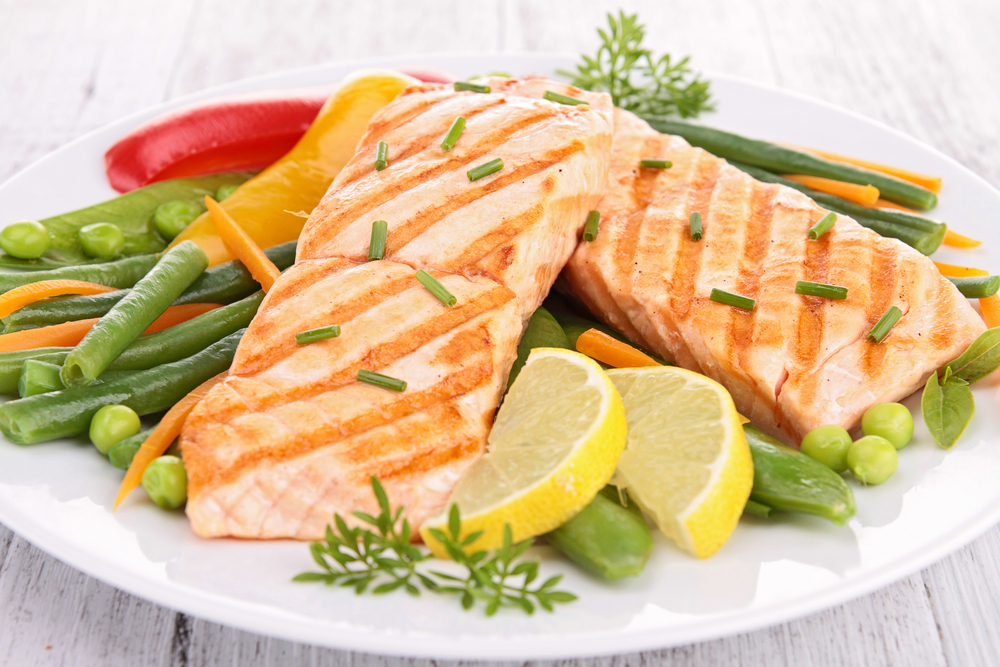
The FDA, Food and Drug Administration states you should heat your salmon to an internal temperature of 145°F or 63°C to avoid illness.
Symptoms of illness from consuming undercooked salmon could include but are not limited to:
- Nausea.
- Vomiting.
- Fever.
- Chills.
- Diarrhea.
- Numbness and tingling in your hands and feet.
- Confusion.
- Headache.
What seasoning should I put on salmon?
The seasoning you should put on salmon is ultimately up to you of what you want on your salmon! As long as you season your salmon immediately before cooking, any seasoning will work! Salt and pepper are the number one seasonings most people use on salmon. However, there are many other spices to sprinkle on top of your salmon.
Some of those spices or seasonings could include:
- Salt.
- Pepper.
- Brown sugar.
- Lemon Pepper.
- Parsely.
- Thyme.
- Paprika.
- Dill.
- Garlic powder.
- Lemon or orange Zest.
- Basil.
- Tarragon.
- Allspice.
- Cumin.
- Olive oil.
- Oregano.
- Chili powder.
- Celery seed.
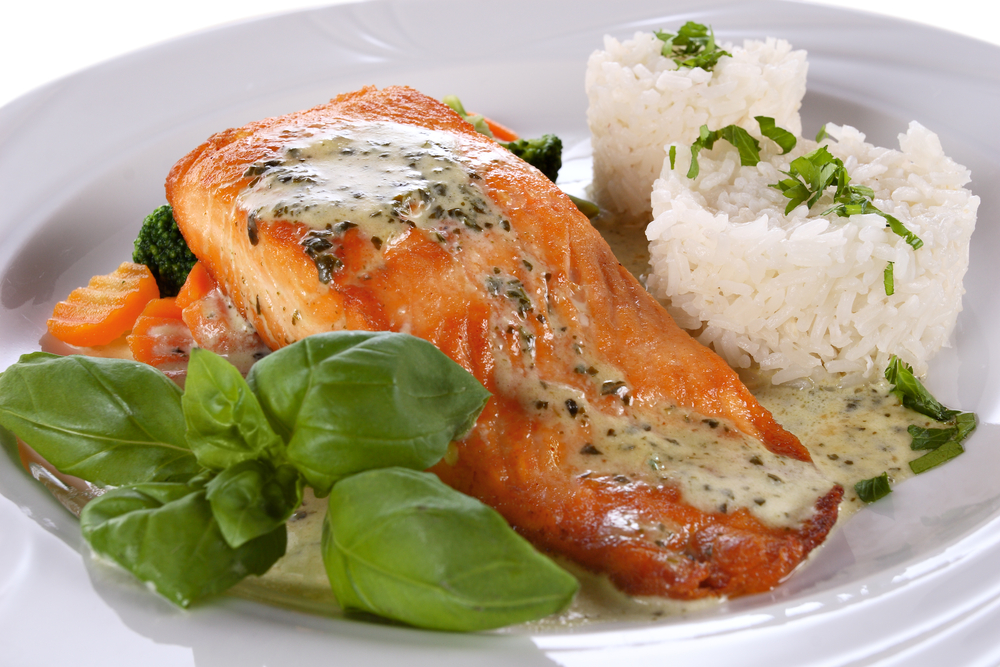
Ultimately it is up to your liking and preference on which seasonings and spices to use on salmon.
What kind of sauce goes well with salmon?
Like seasonings, it ultimately depends on your preference for what goes well with salmon. However, any sauce that consists of butter, garlic, or lemon can always be a safe option.
Some of the most common sauces to pair with your salmon could include but are not limited to:
- Honey mustard.
- Lemon herb butter sauce.
- Tomatillo salsa verde.
- White wine sauce.
- Tomato basil salsa.
- Honey sriracha.
- Miso glaze.
- Creamy horseradish sauce.
- Sweet and sour sauce.
- Apple cider glaze.
- Teriyaki sauce.
Related posts:
Final Thoughts
In summary, sufficiently cooked salmon should be an opaque white, slightly pink color on the outside and a sheer light pink in the center. Undercooked salmon could be risky to your health, and overcooked is not very palatable. There are many precautions you can take to prevent over or undercooked salmon.



